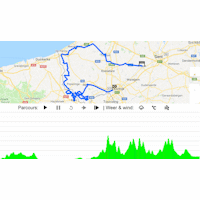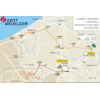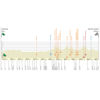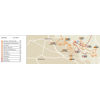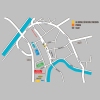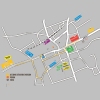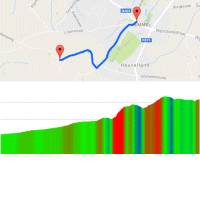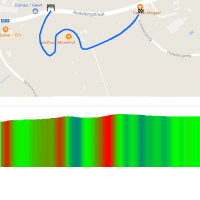The name may suggest otherwise, but for over a decade Gent-Wevelgem hasn’t started in Ghent. The riders click into their pedals in Deinze, 20 kilometres southwest of Ghent, to traverse the flat fields of Flanders in the first half of the race.
Gent-Wevelgem enters France after 130 kilometres and shortly the first hills appear. In quick succession Mont des Chats, Mont Kokereel, Vert Mont, Mont Noir and again Mont Noir (this time from another side) are crested. The pack returns to Belgium for the last 90 kilometres.
Back on Gent-Wevelgem’s home-soil, the Baneberg serves its ramps up to 20% on a 300 metres climb. A little later the 3 kilometres Kemmelberg takes in a maximum grade of 17%. The route continues to the Monteberg before Gent-Wevelgem brings a shortened version of Strade Bianche ‘Flemish style’. In short succession the route includes three sections on unpaved roads with the first two strips slightly sloping in open plains. The last strip runs through the forest. Still 54 kilometres remaining after the last one of these so called Plugstreets.
Both Baneberg and Kemmelberg have been climbed before and they reappear in the last 45 kilometres. The Kemmelberg is particularly intimidating as the second ascent is on the western side, meaning cobbles and a steepest sector of 23%. It is the last uphill of the day and the remaining 34 kilometres are played out on straight and often windy roads. There is one change of direction when the route moves through Ypers and leaves the place via the renowned Menin Gate Memorial. Chasers will have a perfect target if there are any attackers on the road.
Last year’s attackers were brought back inside the last 25 kilometres before Peter Sagan outgunned Elia Viviani and Arnaud Démare on the line.
Another interesting read: results Gent-Wevelgem 2019.
Gent – Wevelgem 2019: route, profiles, more
Click on the images to zoom
